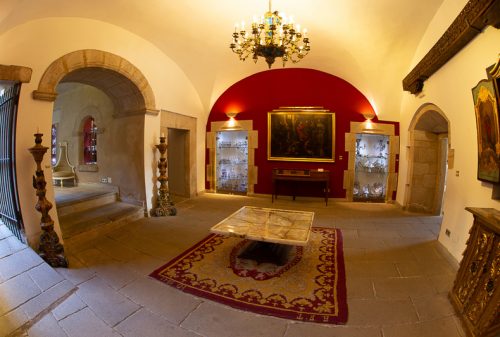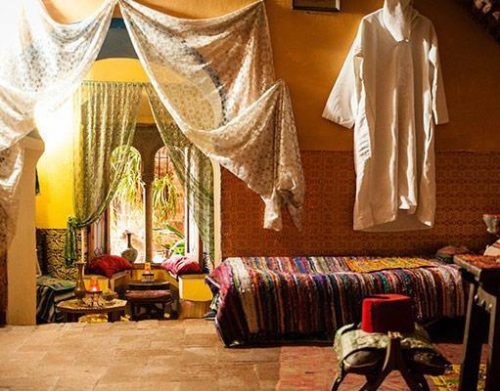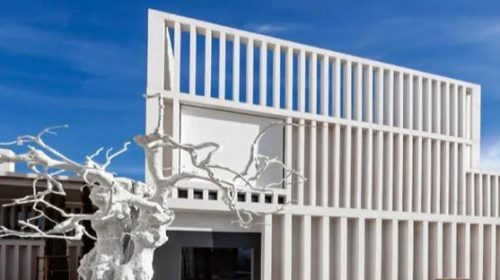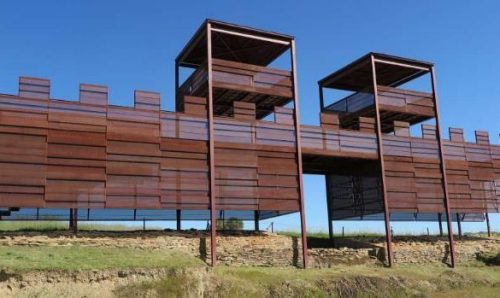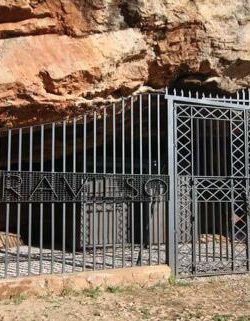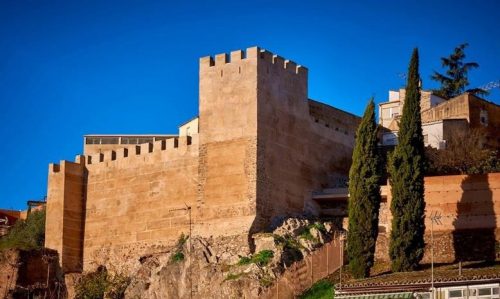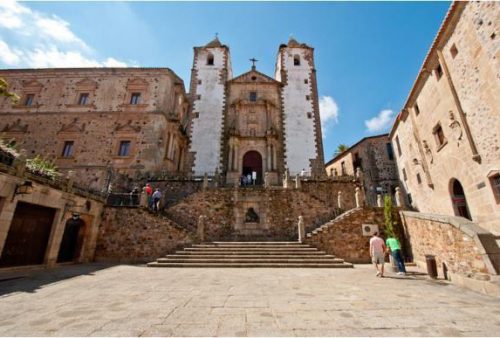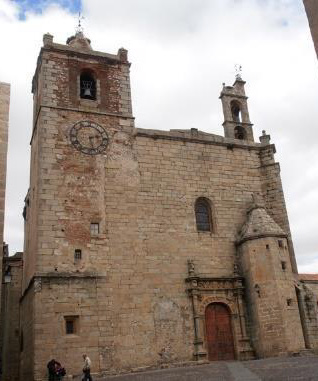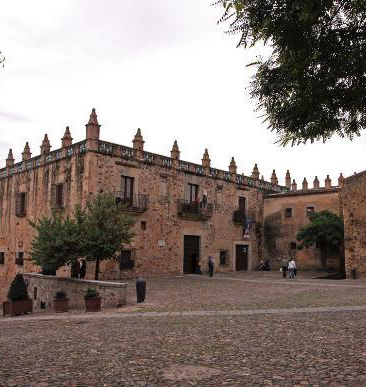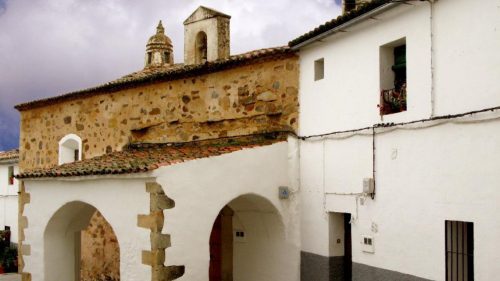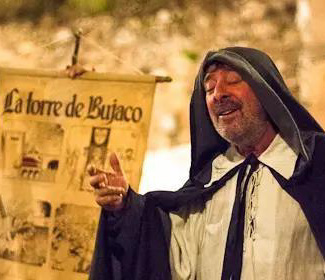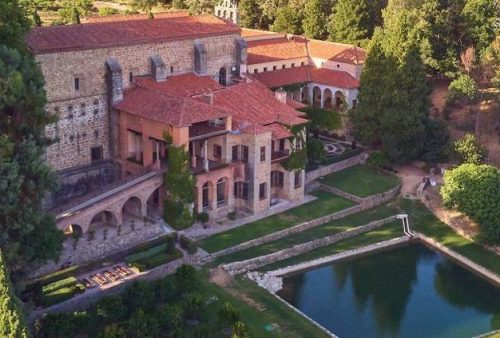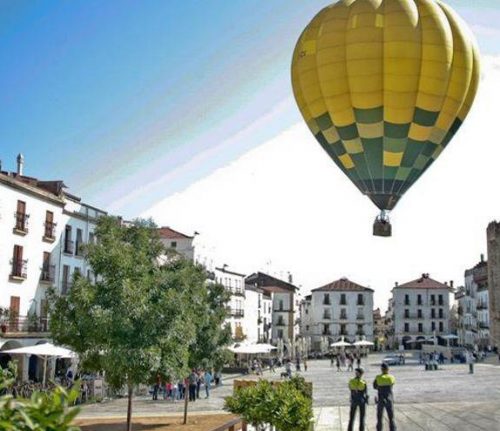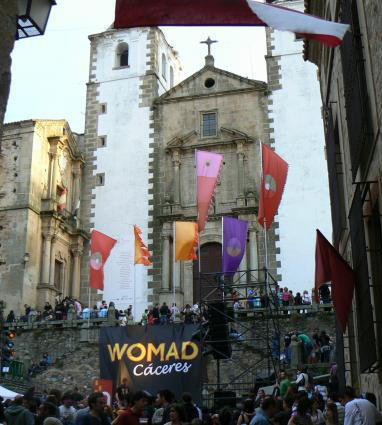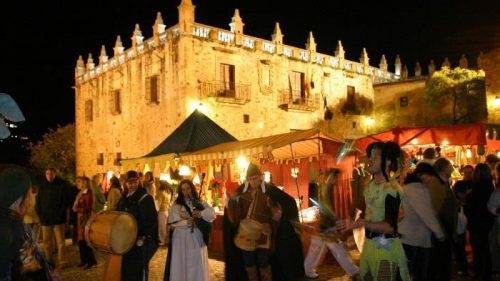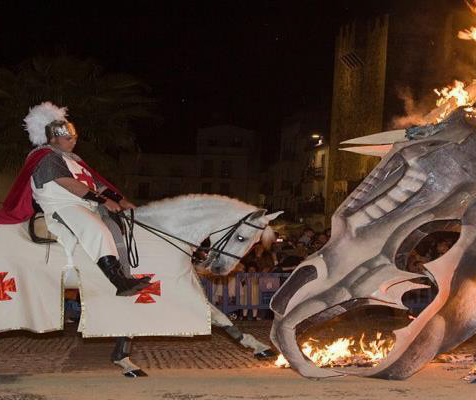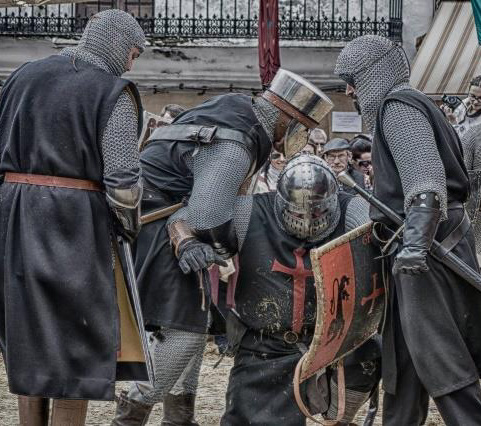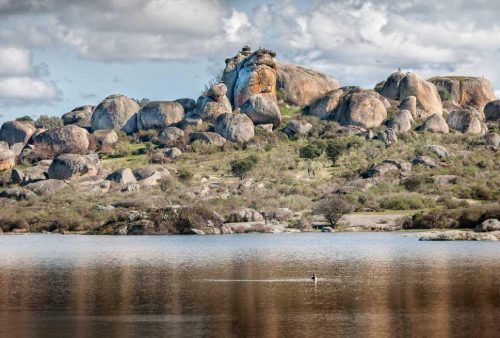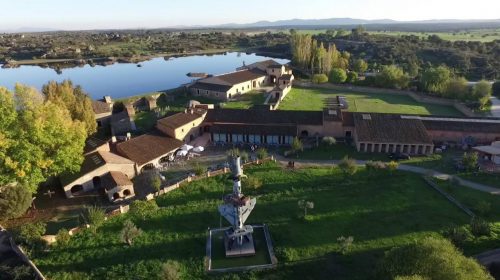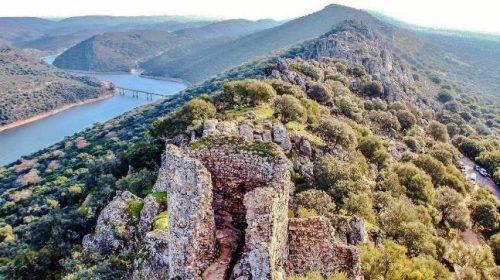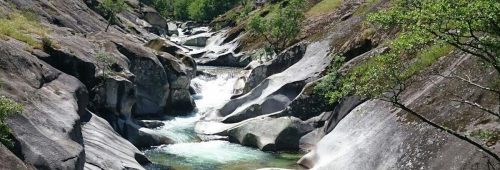What to see in Cáceres?
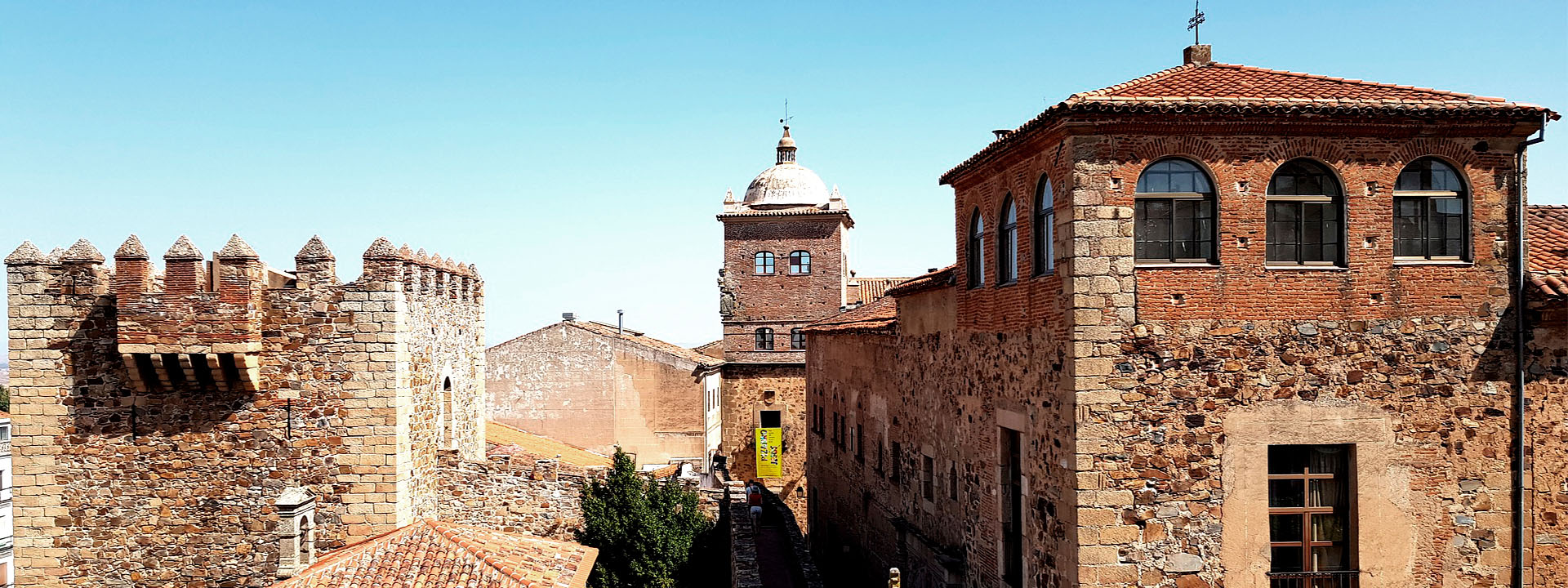
Discover the most beautiful places in Cáceres
Discover Cáceres through your five senses: its historic city declared World Heritage Site, its impressive monuments and its natural environment are part of the great attraction of a city that we invite you to discover. Get lost in its streets and discover the most emblematic places of Cáceres.
DISCOVER CÁCERES
1. EMBLEMATIC AREAS OF CÁCERES
- Cáceres: monumental city
- Bujaco Tower
- Santa María Square
- Carvajal Palace
- Palace of the Golfines de Abajo
2. MUSEUMS AND CULTURAL CENTERS
- Mercedes Calles Foundation – Carlos Ballestero
- Yusuf Al Burch Arab House Museum
- Helga de Alvear Museum
- Interpretation Center of the Roman camp of Cáceres el Viejo
- Maltravieso Cave Interpretation Center
- Baluarte de los Pozos Tourist Center
- House of the Moragas family
4. EXPERIENCES OUTSIDE THE CITY
- Yuste Monastery
- Ballooning in Cáceres
- Starlight: Stargazing
- Horseback riding in Los Barruecos
- Bicycle ride
1.Emblematic Spaces
Descubre los lugares más emblemáticos de Cáceres y déjate sorprender por su historia, su singularidad y su belleza.
The City
The buildings in Cáceres take us back to past times, corners that we can discover and contemplate, towers, coats of arms or the layout of a cobbled street.
The walled complex with its buildings was declared a National Monument in 1949. In 1968 it was awarded the title of Europe’s third most important monumental site, and since 1986 it has held the title of World Heritage City, awarded by UNESCO. Cáceres also has other awards to its name: Pomme d’Or for tourist merit, awarded by the International Federation of Tourism Journalists and Writers in 1996; Les Etoiles d’Or du Jumelage, awarded by the European Commission in 1999; and the Archiva! prize, awarded by the Association for the Recovery of Historic Centres in 2004.
Strolling through the Monumental City at night or in the rain can lead to the enjoyment of thousands of sensations. Modern Cáceres, in turn, can be accompanied by cultural and leisure activities, as well as high quality tourist services that make a visit to Cáceres a memorable experience.
Cáceres, with its Renaissance palaces and squares with a medieval flavour, and the narrow streets of its monumental city will make you feel that time has passed unnoticed. You will find Palaeolithic cave paintings, Neolithic pottery, Iron Age warrior stelae, Vetonean boars, remains of the Roman Norba Caesarina, the Arab wall and aijibe of Qazris, medieval fortified houses and Renaissance palaces. It is an incredible medieval film set.
BUJACO TOWER
The city’s flagship monument, built in the 12th century on top of Roman ashlars in the Arabic style, is named after the Caliph Abu Ja’qub, whose troops conquered the city on 10 March 1173 after six months of siege. It was also called the Clock Tower because from the 16th century to the 18th century it had a clock that served as a time guide for those who lived in the public square and engaged in commerce.
Next to the Bujaco Tower is the entrance to the old town wall, along which you can take a nice walk.
SANTA MARÍA SQUARE
You can visit the Co-cathedral of Santa María, built between the 15th and 16th centuries, which has interior and exterior elements of Romanesque style and transition to Gothic and Renaissance in the choir and tower.
The chapel is adorned with a magnificent and important altarpiece, dating from 1551, made of cedar wood. The visit lasts approximately 40 minutes, between the chapels, sacristy, main altarpiece and the tower, from which a 360º panoramic view of the whole monumental complex can be observed.
CARVAJAL PALACE
From the end of the 15th and beginning of the 16th century, with Gothic and Renaissance elements. Above its semicircular doorway, the coat of arms of the Carvajal family and a corner balcony with a pointed arch stand out. Its round tower, dating from the 12th century, stands out, and inside it there is a rectangular cloister with arcades on columns, and a garden with a 400-year-old fig tree.
PALACE OF LOS GOLFINES DE ABAJO
Private. Tatiana Pérez Guzmán El Bueno Foundation. Completed in the early 16th century by Sancho de Paredes Golfín, who was the chamberlain to Queen Isabella the Catholic, it is one of the most emblematic palaces in Cáceres.
It has a Plateresque façade with Gothic elements, and one of its towers bears the coat of arms of the Golfines, and is the palace where the Catholic Monarchs stayed. Its Hall of Lineages or Hall of Arms, and various rooms decorated in different periods up to the 20th century. Along with the furniture and works of art, you can also see a selection of historical documents from the Foundation’s archives..
Free entrance for those staying at Hospes Palacio de Arenales & Spa.
2. Museums and Cultural Centres
FOUNDATION MERCEDES CALLES – CARLOS BALLESTERO
Private, non-profit, independent institution, constituted with the testamentary legacy of Doña Mercedes Calles Martín-Pedrilla, for purposes of general interest of the city of Cáceres and its inhabitants, and to address with its programmes, among others, activities related to the promotion of culture, science, scientific research, new technologies and the environment, as well as to promote the socio-economic development of citizens.
CASA MUSEO ÁRABE YUSUF AL BURCH
Es una casa árabe del siglo XII. Una visita diferente que no debe perderse. Situada en la cuesta del Marqués, junto a la plaza de San Jorge, es una casa original que data del siglo XII. Adquirida y restaurada por el señor José De La Torre, descubrió en su interior vestigios árabes y romanos y decidió mantenerla y habilitarla para que los turistas pudieran ver como se vivía en aquella época, se inauguró como museo en el año 1976 con la presencia del embajador de lrak y desde entonces está abierta al público para quien quiera visitarla. En su interior entre otras salas se encuentra el aijibe, termas romanas, bodega, jardín etc…
HELGA DE ALVEAR MUSEUM
The Foundation was created to house the collection of the German gallery owner Helga de Alvear, considered one of the largest and most important collections of international contemporary art in Spain and one of the most important in Europe.
In 2010 the first phase of the Visual Arts Centre opened to the public. This is the refurbishment and museographic adaptation of the building known as Casa Grande, a private modernist house designed by the architect Francisco de la Pezuela y Ramírez and completed in 1910.
The remodelling and extension of the Centre has been carried out by the renowned Tuñón + Mansilla Arquitectos studio, responsible for the new building that will complete this project and connect the modern city with the monumental site.
In the Visual Arts Centre, both the collection and the most recent contemporary creations are shown to the public in long-term exhibitions, in curatorial programmes by some of the most renowned curators on the international scene.
Free admission
INTERPRETATION CENTRE OF THE ROMAN CAMP OF CÁCERES EL VIEJO
Archaeological site of a Roman camp. Free admission
It allows you to see in first hand a Roman camp from 80 B.C. Through explanatory panels you can learn about the daily life of a legionary, how they dressed and what their mission was.
MALTRAVIESO CAVE INTERPRETATION CENTRE
For conservation reasons the cave is not open to the public. However, you can visit the Interpretation Centre, an exhibition on the cave. The Interpretation Centre is located in the park of the same name, next to the cave, inside the city of Cáceres.
The cave was discovered in 1951 and in 1956 parietal art was found, which put an end to the exploitation of the quarry. It was a refuge for hunter-gatherers 350,000 years ago, conserving a collection of parietal art that was attributed to the Upper Palaeolithic. It was also a burial site in the Neolithic and Bronze Ages.
TOURIST CENTRE BALUARTE DE LOS POZOS
12th-century Almohad tower that protected strategic wells for supplying the city in the event of a military siege. It is located in the old Jewish quarter and includes a typical house, garden and tower (a magnificent Almohad fortress). It exhibits a collection of models that faithfully reproduce different monuments of the city.
HOUSE OF LOS MORAGAS
It is a 15th century house acquired by the Provincial Council of Cáceres which was extensively restored and is currently used as the Provincial Crafts Centre. The “Casa de los Moraga” exhibits a representative sample of Extremaduran craftsmanship: pottery, basketry, copper, cork, forge, wood, textiles, gold and silver work, etc. Free admission.
3. Other Places of Interest
SAN JORGE SQUARE
San Jorge has been the patron saint of Cáceres since 1229, when it was conquered by the troops of Alfonso IX. It is made up of the church of San Francisco Javier (popularly known as the Preciosa Sangre), a Baroque construction from the 18th century, and the convent of the Company of Jesus, and the current exhibition palace of San Jorge, “Sala de divulgación de la Semana Santa” (Holly Week) aims to show the peculiarities of this festivity, with a unique vision.
SAN MATEO SQUARE
The church of the same name was built on the remains of an Arab mosque between the 18th and 19th centuries. Late Gothic in style, it has a Renaissance chapel. Its beautiful Plateresque door and the rococo altarpiece from the 18th century, along with the 18th century rococo altarpiece, together with the numerous granite tombs found inside.
In the same square is the convent of San Pablo, an enclosed convent of Franciscan nuns built on the site of an earlier hermitage and well known for its delicious pastries.
PLAZA DE LAS VELETAS
The Casa Palacio del Aijibe or House of the Weather Vanes, dating back to the late 15th century, stands on the site of what was once an Almohad fortress. In its basement, there is a Hispano-Arabic cistern from the Muslim era. The palace houses the Provincial Archaeological Museum, featuring a collection spanning from Prehistory to the Visigothic period. Another section focuses on Ethnography, showcasing the Hispano-Arabic cistern and a Fine Arts collection, including works from the Prado Museum and pieces by Extremaduran artists.
JEWISH QUARTER
This route takes us back to the 13th century with the presence of the Cáceres Jewish community living side by side with the Muslim community, as recorded in the Cáceres Charter of 1229. On this route you can visit the most relevant elements of the Jewish past of the city within the walls known as the “Old Jewish Quarter”, which has preserved a physiognomy of popular dwellings adapted to the unevenness of the terrain (Barrio de la Quebrada). In its surroundings we can highlight the Callejón de Don Álvaro, Calle Pereros, the Olivar de la Judería, El Rincón de la Monja and the Ermita de San Antonio where the old synagogue was located.
DRAMATISED TOURS
Having a minstrel tell you the story is one of the best and most fun options to remember the past of the medieval city, enjoy some of the visits offered at night that will guide you on a walk through the romances, tales and lies of the city. www.cuentatrovas.com
4. Out of town Experiences
MONASTERY OF YUSTE
The Monastery of Yuste is known worldwide for being the last resting place of Emperor Charles V, and is currently the venue for the award ceremony of the Charles V European Prize in a ceremony presided over by H.M. the King. In a privileged setting, during the visit to the Monastery we can visit the Royal Room, the church and the Gothic and Renaissance cloisters.
HOT AIR BALLOON FLIGHT IN CACERES
Duration:The duration of this activity consists of 1 hour flight plus balloon preparation and subsequent celebration.
Timetable: Always at dawn
Conditions: Minimum age 12 years old. Groups between 1 and 10 people.
Ask for a quote at the hotel reception.
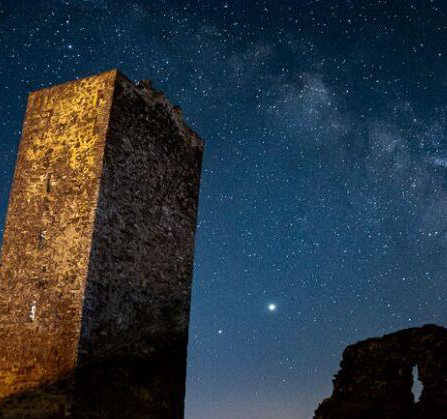
STARLIGHT: OBSERVACIÓN DE ESTRELLAS
Duration: 1 hora y 30 minutos.
Schedule: Nocturno
More information: The tour is conducted exclusively in Spanish. Children under 4 years old free.
Ask for a quote at the hotel reception.
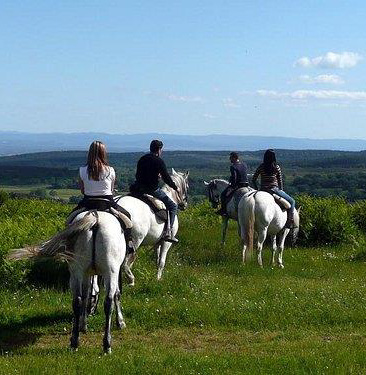
HORSEBAC RIDING IN LOS BARRUECOS
Schedule: Check availability at the hotel reception.
Duration: Horseback riding through the meadow of Los Barruecos (1 hour): 35 €/person. Route through Los Barruecos with picnic (1 hour)
More information: The monitors accompany you throughout the route, provide the material and safety accessories. Children: Check conditions with hotel reception.de seguridad. Niños: Consultar condiciones con recepción del hotel.

BICYCLE TOUR
Consult routes at the hotel reception
5. Tipical events in Cáceres
WOMAD – World Of Music, Arts & Dance
Carretera de Yuste s/n, 10430 Cuacos de Yuste
It is an international cultural festival organised by the world organisation WOMAD, which includes popular music, ethnic music, crafts and other recreational activities.
It has been held in Cáceres since 1992. It has several special features compared to other festivals around the world. One of its main distinguishing features is undoubtedly the place where the workshops and other activities are held: in the open air and in the various squares of the Medieval and Monumental City, declared a World Heritage Site by Unesco.
Indoor workshops are held inside the palaces and old houses of the Monumental City and the open workshops are held in the different squares and streets.
It has become one of the most important cultural events in Extremadura and one of the most complete and popular festivals in Spain. The number of spectators has increased spectacularly in recent editions. In 1999 it attracted almost 100,000 people.
MEDIEVAL MARKET OF THE 3 CULTURES
The Medieval Market of the 3 cultures comes to Cáceres every year during the second week of November. An open-air weekend to immerse yourself in medieval times for all audiences.
Every autumn the Christian, Jewish and Arab cultures are mixed in the old town of Cáceres through different activities such as exhibitions, music, theatre, craft stalls and gastronomy. An unbeatable opportunity to go back to the Middle Ages and get to know the cultures that lived together in the city with entertainment and street shows that accompany a host of activities.
SAN JORGE & THE DRAGON
San Jorge is one of the most important dates for Cáceres, the feast of the city’s patron saint.
The festival begins on 22 April with the parade and fight of Moors and Christians, and the burning of the dragon; and continues on the 23rd with a mass and procession.
Legend has it that Cáceres was reconquered by means of a Christian captain’s deception of a Moorish princess, whom he seduced in order to obtain the keys to the passageway through which to enter the city. The Christian troops were able to enter through the secret passageway and the surprised Muslims lost the battle. It was 23 April, the feast of St George. Before dying, the princess’s father, furious at the deception, put a curse on his daughter. He turned her into a hen and her maidens into chicks covered with golden feathers, who would have to wander eternally through the passages of the city.
FRATRES: MEDIEVAL FENCING EXHIBITION
They recreate shows, in a rigorous way, about the customs and combats of past times (mainly the Middle Ages, but also the Ancient and Modern Ages) in which Cáceres shone with its own light on both sides of the Atlantic.
They perform mainly in the towns and cities of Extremadura, in events organised by their town councils and in Cáceres, especially during the patron saint’s festival of San Jorge. But if you are lucky you can see them training in the old town of Cáceres, in the Plaza de San Jorge or in the Plaza de las Veletas (except in the summer season).
BOOK FAIR
The most important cultural event included in the Calendar of the Institución Ferial de Cáceres.
Lasting ten days (mid-April), it occupies the Paseo de Cánovas, with stalls from the city’s bookshops and institutions with a monographic theme, complementary activities such as the presentation of the prize-winning works in the Diputación de Cáceres competitions, as well as round tables, colloquiums and workshops.
6. Tourist areas
THE BARRUECOS
A natural site declared a natural monument by the Junta de Extremadura, located 9 km from “Hospes Palacio de Arenales”, it has large granite masses originating monolithic forms called globes moulded by the hand of nature.
The main building was an old 18th century wool laundry, where the Vostell Museum is located, the tombs and remains of Roman and medieval buildings, the excavations of the Neolithic period and the megalithic remains of the Hijadilla complete the magic of this place, it is a privileged place for the observation and study of the different species of birds.
VOSTELL MUSEUM
“The Vostell Museum, created by the German artist Wolf Vostell (Leverkusen 1932 – Berlin, 1998), a Spanish-German artist of international prestige, a fundamental figure in contemporary art, discoverer of the “Dé colljage” technique, father of the “Happening” in Europe and initiator of the “Fluxus” movement and video art.
MONFRAGÜE NATIONAL PARK
It is one of the largest and best-preserved areas of Mediterranean woodland in the world. It is located between the wild mountain ranges of the Tajo and Tiétar valleys. From the Gitano waterfall you can comfortably observe black storks, vultures, eagle owls, imperial eagles and many other species.
A recommended visit is to contemplate the beautiful panoramic views from the top of the castle tower, where the Arab princess Noeima was condemned to wander eternally for falling in love with a handsome Christian.
Beyond this legend, the Sierra de las Corchuelas has a cave, nowadays closed, with a set of cave paintings from the Bronze Age representing the hunting activities of the time.
This protected area has routes with a guide or can be done on your own. The Park can be visited at any time.
Hiking routes
- Red Route (Castle): 16 km route with a duration of 5h and a medium difficulty.
- Green Route (Arroyo de Malvecino-Cerro Gimio): 8 km route with a duration of 2.5 h and a low difficulty.
- Yellow Route (Mirador de la Tajadilla): 9 km route with a duration of 3 h and a low difficulty.
- Blue Route (Malpartida de Plasencia): 19 km route of medium difficulty.
NATURAL RESERVE OF THE“GARGANTA DE LOS INFIERNOS”
The Garganta de los Infiernos Nature Reserve is a protected natural area, located in the northern province of Extremadura, at the western end of the Sierra de Gredos mountain range. It is rich in waterfalls, streams, waterfalls, natural pools and large pools excavated due to the erosion of the water circulation of the rivers.
The high humidity, in turn, helps to promote the ecologically important vegetation and ecosystems of deciduous forests, riparian forests, alpine broom forests and alpine pastures. The fauna is indigenous and very rich, with several endangered species.
¡Cáceres te espera! Descubre una ciudad histórica, Patrimonio de la Humanidad por la UNESCO, piérdete en sus calles o descubre su riqueza natural. Enriquece tu experiencia en la antigua casa de verano de la familia Golfín rodeada de naturaleza, olivos centenarios y nidos de cigüeñas; convertida en hotel de lujo, disfruta de la gastronomía local en el Restaurante Las Corchuelas y recupera energías en el Spa Bodyna. ¡Te esperamos!
Categories: Uncategorized

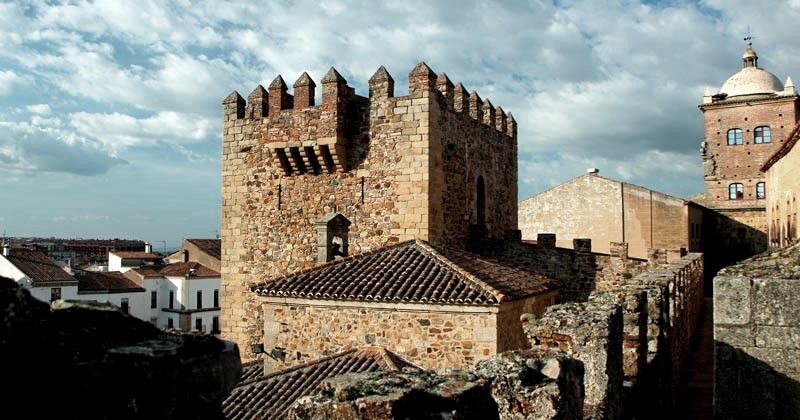
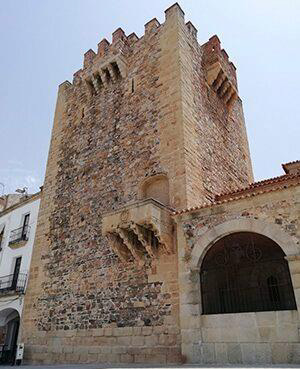
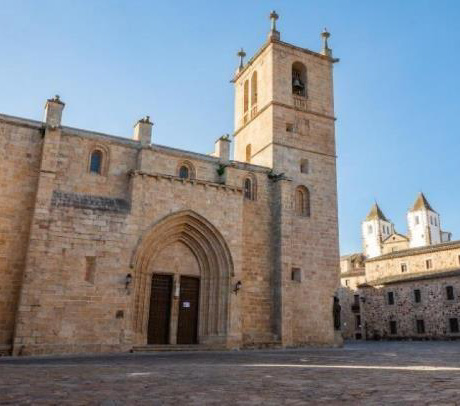
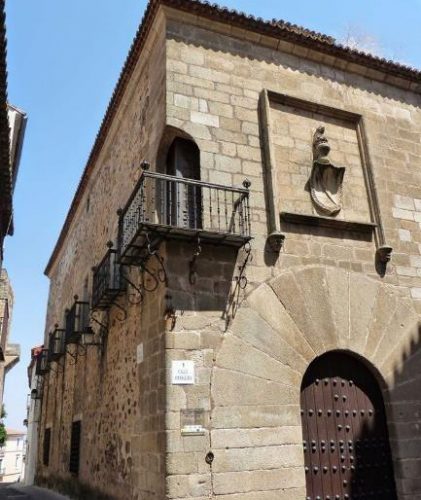
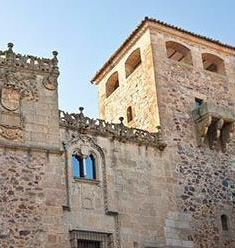 <
<